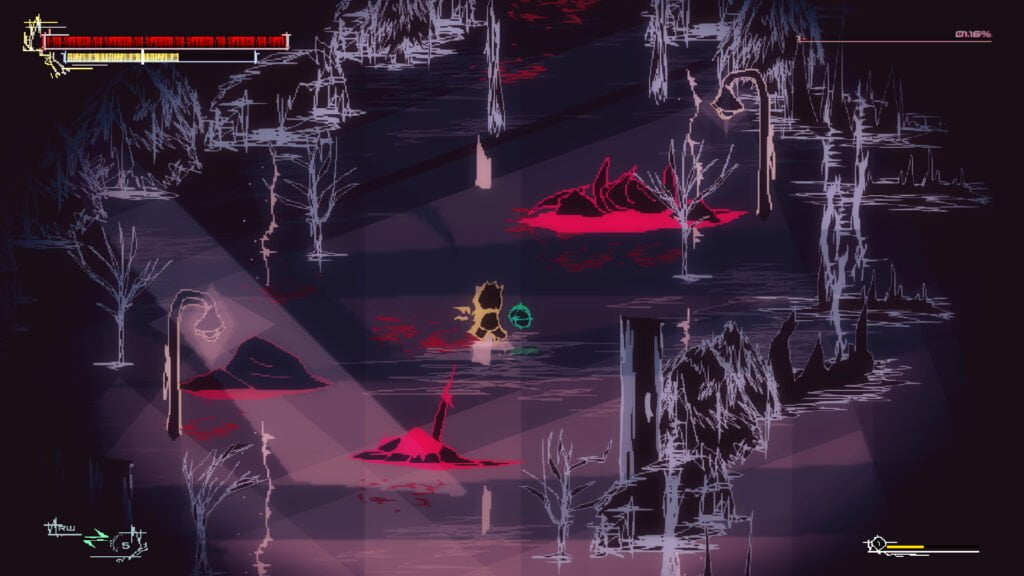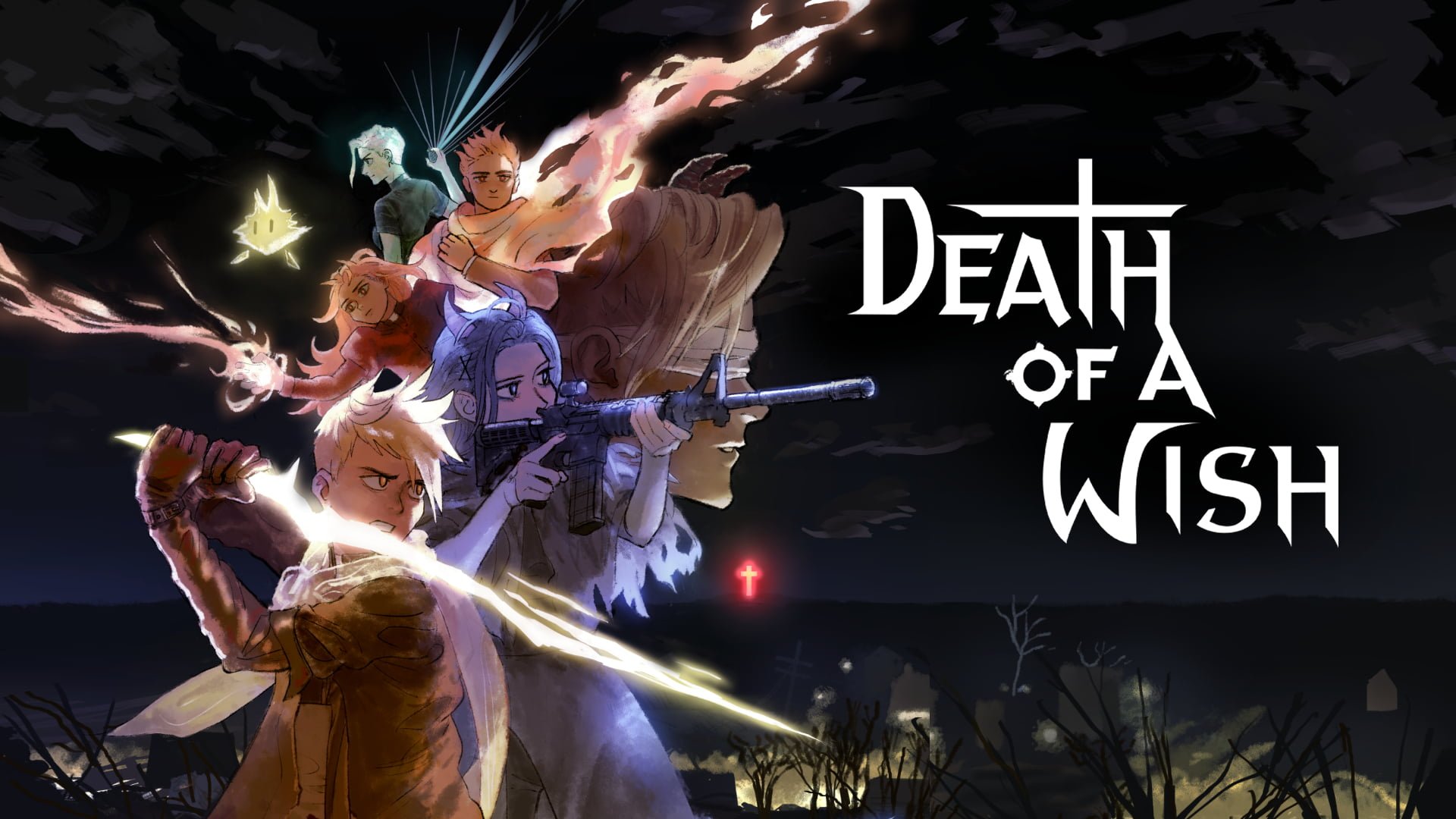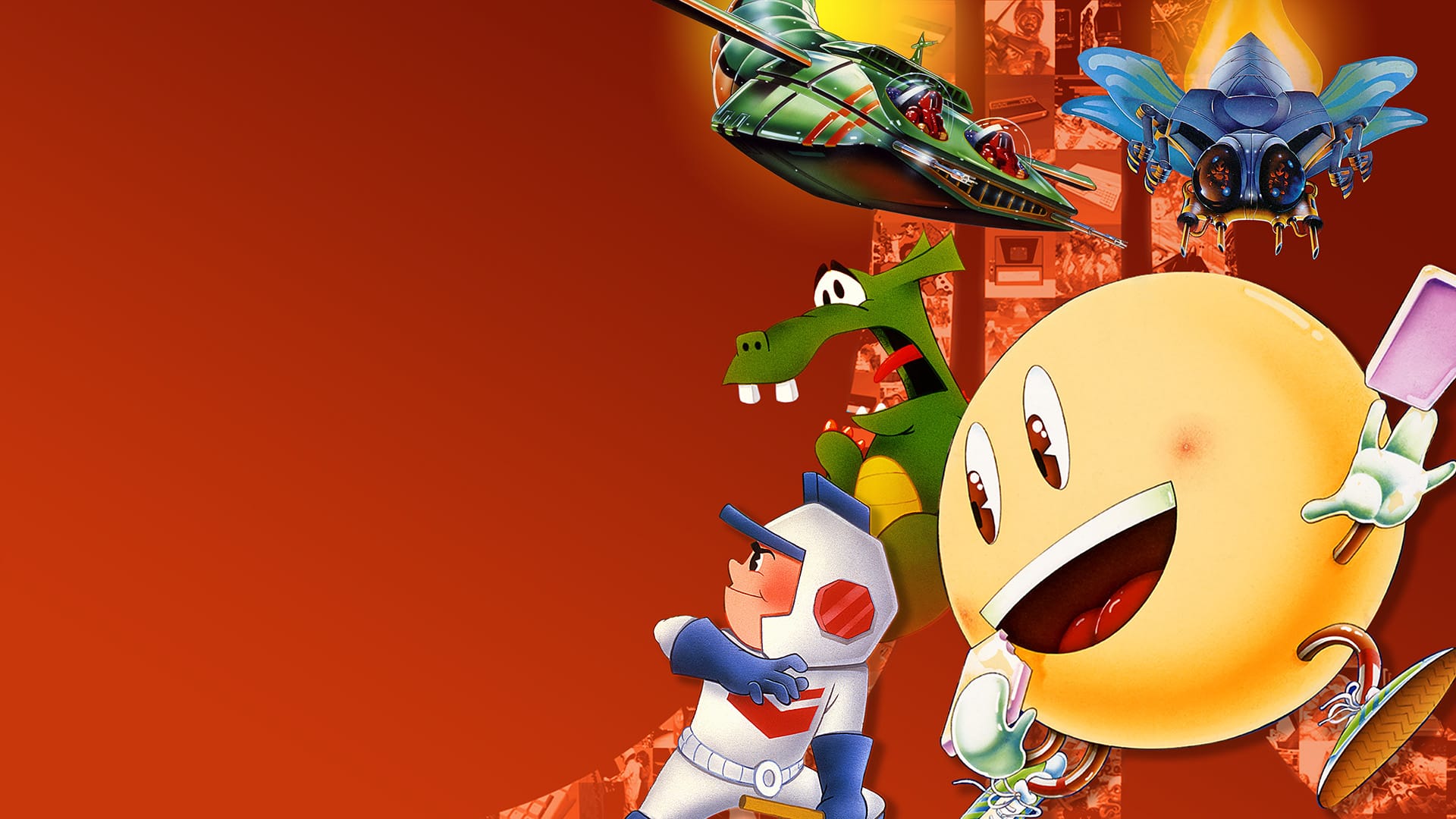Death of a Wish is quite possibly one of the best action games ever made. That’s hardly surprising given how its predecessor, Lucah: Born of a Dream, was similarly one of the genre’s best. Its blend of Souls-like and character action design was unique, a stylish and satisfying kind of play that took the best parts of its inspirations and spun them into something entirely new. Death of a Wish builds off that in a slightly different direction, maintaining the core aspects that made Born of a Dream spectacular while iterating in fun and exciting ways.
But Death of a Wish is more than just an incredible action game. It’s a heartfelt story of resistance, of fighting for your right to exist in a world that doesn’t want you. It’s a game born of looking at a world that is constantly doing harm and falling apart at the seams and figuring out what to do about it. Like Extreme Meatpunks Forever and Umurangi Generation before it, Death of a Wish is a game that feels so of the moment, so pointed in its anger, that it’s hard to see it as anything but a reaction to the current state of affairs. But it is also, like many queer-led stories, about community and solidarity and found family. It is about trauma and the struggle to overcome it.
Death of a Wish picks up right where Lucah: Born of a Dream leaves off. Following Lucah’s departure from Paradiso, Christian’s still stuck in the dream, but now with renewed purpose. He seeks to destroy the Sanctum and its Faiths — the group who rules over Paradiso, effectively, and the group who raised him. Rather than stand idly by and stew in turmoil like before, this time Christian is choosing to take a stand and fight: to end the tyranny of the Sanctum once and for all.
Starting first with his father.

Before he gets his chance, however, Christian’s father is killed by one of the Faiths of the Sanctum, Samael, who seeks to build the Sanctum into something bigger and more terrifying. The scale of the operation becomes clear very quickly: massive armies with enough weapons and ammo to arm a small country, occupying cities and settlements, “cleansing” them of whoever is deemed an enemy or simply beneath them either on sight or through public execution by firing squad. People live in constant fear, whether under their rule directly or surviving outside their grasp, afraid that they’ll eventually return and be forced into subjugation once more. Paradiso hasn’t ever been in a particularly great state as Born of a Dream illustrated, but it’s only gotten worse since the events of the previous game. The conditions are ripe for something to give.
Like Lucah: Born of a Dream, Death of a Wish doesn’t pull its punches. It is partially a revenge story. Christian is driven by an intense anger and fury born of what the Sanctum did to him and his loved ones, a desire to see them burn for all they’ve done. As such it is a dark and often depressing story — how could it not be given what the cast has been through, what horrors they have to endure? — but one that is ultimately hopeful. It doesn’t revel in misery or delve into dark subject matter carelessly. It’s working with a very deft hand. Like Lucah it is a downward spiral that eventually gives way to catharsis, a series of highs that lead to a powerful conclusion that is beautiful if a bit bittersweet.
As Christian is now the lead character, it’s only fitting then that combat be more vicious this time. Where Born of a Dream was a touch more defensive due to the stamina bar limiting how much you could go on the offensive, Death of a Wish has no such restrictions. You’re encouraged — almost forced to, really — to go all out and never hold back. It is a much more aggressive game, both in design and presentation. Death of a Wish remains the stylish, frenetic dance that combat was in Born of a Dream but turns it into a far more chaotic affair. The scale of battle is increased — the number of foes you fight at time is higher on the whole, and you’re often fighting alongside plenty of allies as well — the pace much faster and intense.

Born of a Dream’s rhythm ensured there was room to breathe. Enemies wouldn’t attack relentlessly, nor could you. There was a clear and controlled cadence. Fights were still quick and brutal, but always manageable. Death of a Wish by contrast feels wild and lethal. A single hit would frequently send me reeling across the stage, depleting almost all of my health instantly. In most other games I would take that as a sign to be cautious, to slow down and focus on finding moments to strike rather than pushing relentlessly. Death of a Wish, however, demands aggression. It is not a game about carefully sizing up your opponent and figuring out the best approach to besting your foes. It is not a game where you are put on your backfoot constantly. It’s the opposite: you need to be putting them on the ropes.
Nowhere is this more apparent than the focus on parries. In Death of a Wish, every enemy has a guard meter. You can slowly whittle it down with basic attacks, but the more expedient approach is to parry them. You parry attacks not by standing your ground and choosing to take a risk of timing a deflection properly, but by meeting them head-on and dodging straight into their strikes. Break their guard meter and they become broken, leaving them unable to act and allowing you to deal significantly more damage.
This is a very smart way to design a parry. It ensures that you’re encouraged to use it because it is attached to your main defensive tool (dodging). There’s no inherent risk from having to choose a parry over a safer option. You can just dodge forward and be confident that, even if you don’t get a parry, you’re still likely to avoid the attack. Add that the parry window itself is generous and there’s no reason not to try. Lucah took the same approach to parries, but it also gave instant reward. Enemies would be broken immediately on a single parry instead of needing to whittle down their guard meter. That change makes parries less immediately powerful, but it also makes combat more exciting and dynamic because there’s no longer an easy route to victory.

It particularly makes fighting against opponents with similar skill sets especially thrilling. The first time I got parried by an enemy when I tried to strike them, when I saw foes taunting me just I could taunt them, was exciting. Fights against characters who are on proper even ground with the player are always some of the best encounters a game can have and Death of a Wish is no exception.
These changes to combat suit the change in perspective. Christian is someone who throws himself recklessly into battle, charging forward endlessly with that single-minded drive to destroy the Sanctum. It’s fitting then that it’s expressed in how he fights. Where Lucah was quiet and introspective, a silent protagonist who could only bear witness to whatever happened before them rather than express themselves directly, Christian is an active participant. He’s brash and full of anger, eager to finally pay back everything he’s endured tenfold. The more measured nature of Born of a Dream’s combat felt right for Lucah then, as they weren’t so outward with their emotions, the changes to make combat more aggressive and fierce likewise suiting Christian because he’s always been loud and willing to lash out.
Amid all of this, Christian is also having to fight back against the corruption that follows any who are “marked” like him. This manifests as a meter that steadily grows during battle. You combat this by playing with style. Chaining together combos, dodging and parrying attacks, switching between loadouts mid-combo — anything that counts as playing well rewards you more points for a better rating. The higher the rating, the more corruption is removed at the end of battle. If the bar fills… something happens. Can’t say what since I worked hard to keep it in check, but based on how the game talks about it, I can assume it’s Not Good.

The corruption meter encourages you to engage with the game’s systems to its fullest. Just mashing out combos mindlessly will only take you so far. Likewise, not attacking until the opponent’s been parried enough to break isn’t enough either. You have to keep the pressure on, refuse to let up on the offensive as much as possible. Only way to excel is to be aggressive, to play with style, to best foes quickly and unscathed. To that end, Death of a Wish allows you to restart encounters entirely to give yourself room to do better. “Rewinds” are an auto-renewing item that reverts the fight to the precise state it was when it began. If a fight isn’t going well or you feel you could have done better, you can pop one and immediately give it another shot. The benefits are twofold: one, it helps make it easier to keep corruption in check because you can retry a fight as many times as you have rewinds available to do so. And two, it encourages you to take risks since you can just revert mistakes and bad plays easily.
Actual healing items are limited. You can only carry a handful at most and they are not an auto-renewable item like rewinds. You have to find new healing items out in the world and wait for them to replenish. And while you can stockpile them easily, they go fast once you start to use them. I relied almost entirely on rewinds for the majority of the game, only finally leaning more on proper heals as the end approached and the difficulty ramped up significantly. Retrying battles again and again to play stylishly and efficiently as possible becomes harder to do at a certain point. The scale of battles had become too big and overwhelming, every scene a mess of friends and foes alike clashing rapidly.
It’s a frequently intense game. The final stretch of the game is particularly difficult due to some fun mechanical twists that come about due to events late in the game. It’s also when Death of a Wish becomes its most hopeful and cathartic. After so much misfortune and tragedy, things finally start to look up. It’s a brief window, the proverbial calm before the storm, but one that makes the events prior — all the pain and suffering Christian and his friends endure — worth it. If not for themselves, then at least for whoever comes after. Death of a Wish is a difficult game in many ways — both in the traditional challenge sense and in how heavy the events of the plot can be — but it’s also one that is so very worthwhile.
Callum Rakestraw (he/him) is the Reviews Editor at Entertainium. You can follow him on Cohost at @crakestraw.





